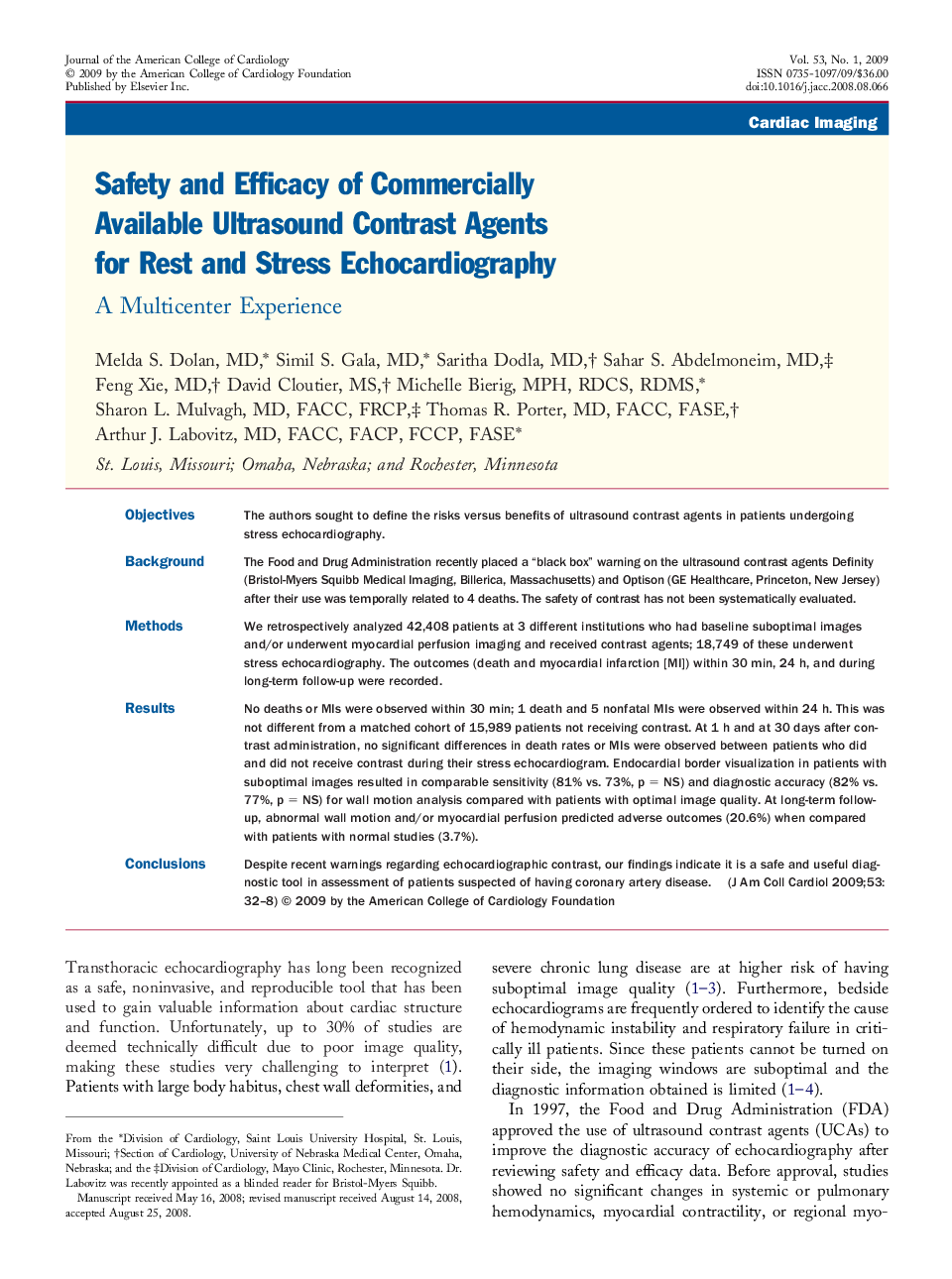| Article ID | Journal | Published Year | Pages | File Type |
|---|---|---|---|---|
| 2951727 | Journal of the American College of Cardiology | 2009 | 7 Pages |
ObjectivesThe authors sought to define the risks versus benefits of ultrasound contrast agents in patients undergoing stress echocardiography.BackgroundThe Food and Drug Administration recently placed a “black box” warning on the ultrasound contrast agents Definity (Bristol-Myers Squibb Medical Imaging, Billerica, Massachusetts) and Optison (GE Healthcare, Princeton, New Jersey) after their use was temporally related to 4 deaths. The safety of contrast has not been systematically evaluated.MethodsWe retrospectively analyzed 42,408 patients at 3 different institutions who had baseline suboptimal images and/or underwent myocardial perfusion imaging and received contrast agents; 18,749 of these underwent stress echocardiography. The outcomes (death and myocardial infarction [MI]) within 30 min, 24 h, and during long-term follow-up were recorded.ResultsNo deaths or MIs were observed within 30 min; 1 death and 5 nonfatal MIs were observed within 24 h. This was not different from a matched cohort of 15,989 patients not receiving contrast. At 1 h and at 30 days after contrast administration, no significant differences in death rates or MIs were observed between patients who did and did not receive contrast during their stress echocardiogram. Endocardial border visualization in patients with suboptimal images resulted in comparable sensitivity (81% vs. 73%, p = NS) and diagnostic accuracy (82% vs. 77%, p = NS) for wall motion analysis compared with patients with optimal image quality. At long-term follow-up, abnormal wall motion and/or myocardial perfusion predicted adverse outcomes (20.6%) when compared with patients with normal studies (3.7%).ConclusionsDespite recent warnings regarding echocardiographic contrast, our findings indicate it is a safe and useful diagnostic tool in assessment of patients suspected of having coronary artery disease.
